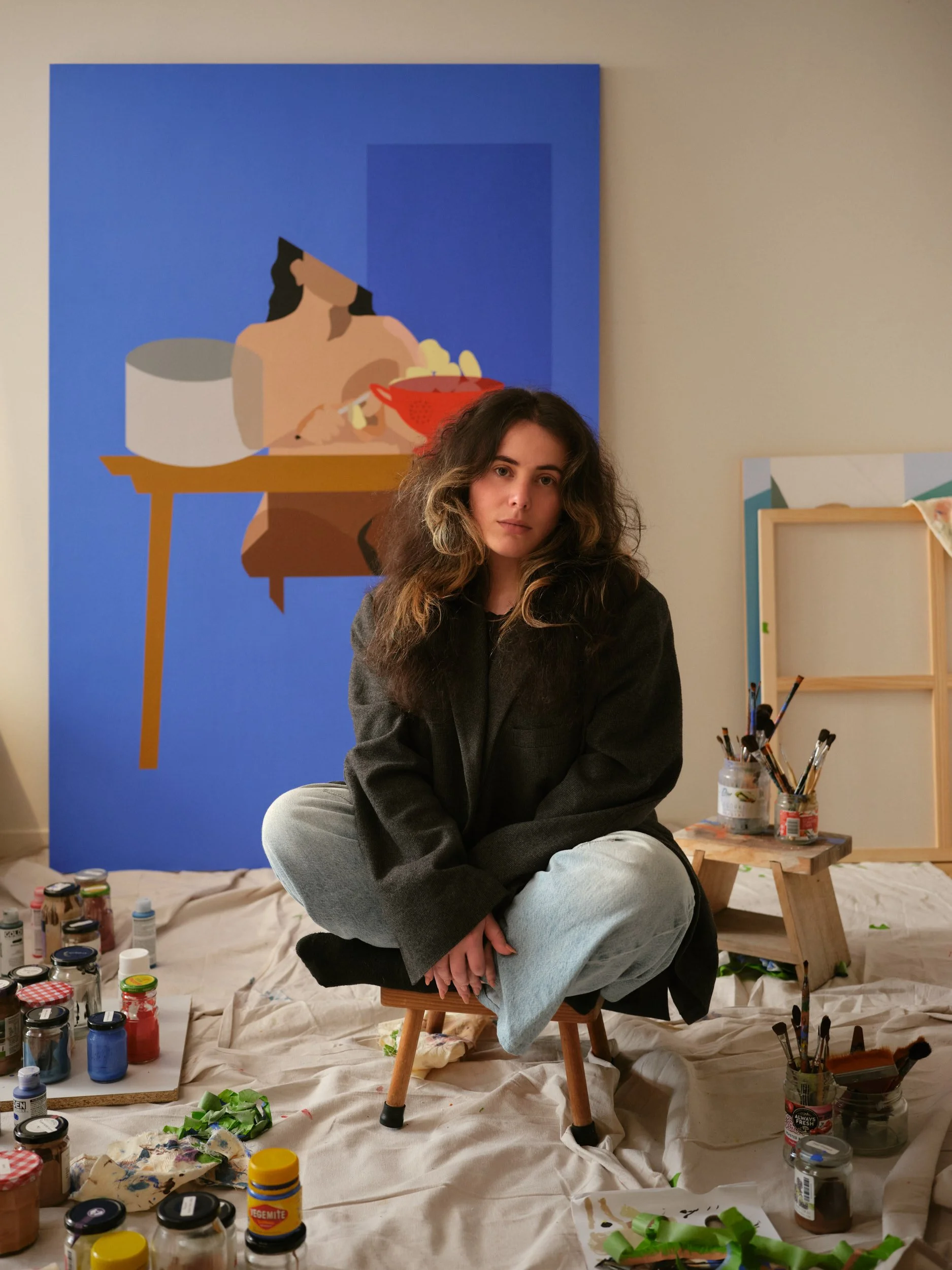About
contact: steph.freda.leigh@gmail.com
Photography by Jake Nemirovsky
Stephania Windholz Leigh is an Australian artist working across painting, sculpture, installation and sound. Her practice investigates the interrelationships between the body, objects and architectural space, often abstracting familiar domestic forms into bold compositions that balance humour, intimacy and unease.
Her work frequently reconfigures chairs, tables, vessels and other everyday objects into flattened, stylised shapes that echo both figure and structure. Through shifts in scale, colour and surface, she creates environments where the body is felt as much as seen, at once contained by and merging with surrounding space. This attention to spatial and bodily tension underpins her wider exploration of identity, belonging and the traces left within domestic life.
In 2025, Windholz Leigh exhibited in Chutzpah: Spirit. Recollection. Self. at the Jewish Museum of Australia, presenting How Many Kneidlach Ago?, A Big Dill and Kogel Mogel. Here, Jewishness emerged as a theme through the lens of food, ritual and humour, highlighting how cultural inheritance intersects with form, object and play. Her 2023 solo exhibition Aren’t You Gonna Eat Your Gefilte Fish? also examined Jewish cultural narratives through culinary and domestic motifs, using abstraction and humour to probe the complexities of assimilation and disconnection.
Earlier projects demonstrate the breadth of her interests in body and space. Ich Piersi, Moje Piersi (Their Breasts, My Breasts), presented at FestivALT in Kraków in 2019, foregrounded Jewish history while confronting the vulnerability of women’s bodies during WWII. Later exhibitions such as Partial Figure (BBYG) at Bayside Gallery in 2021 and Woman, Chair & Plate in BOOBED at ACU Gallery in 2022 shifted toward broader investigations of the female form, domesticity and gendered relationships to space.
Across these works, Windholz Leigh has developed a distinctive visual language that flattens painterly gesture while amplifying form, structure and colour. Whether engaging Jewish cultural histories or exploring the body’s architectural presence, her practice unsettles the boundary between figure and ground, object and environment, humour and gravity. In doing so, she creates spaces that invite audiences to reconsider how bodies inhabit, shape and are shaped by the worlds around them.
